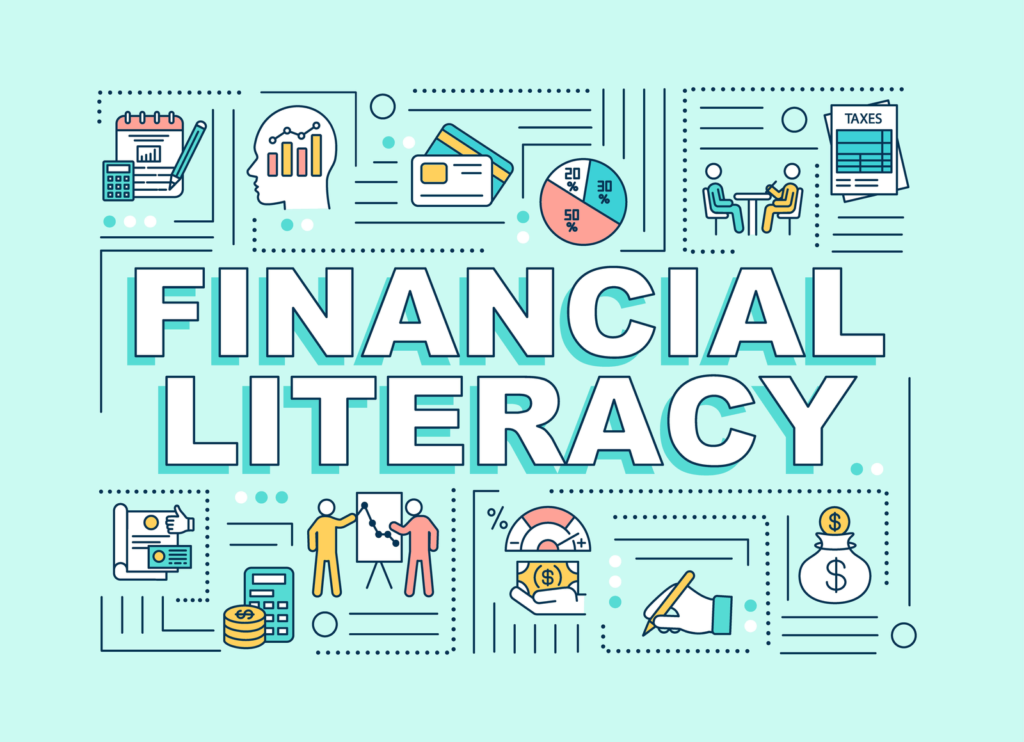Financial literacy is a crucial life skill that empowers individuals to make informed financial decisions, manage money effectively, and plan for their financial future. Integrating financial literacy education into the curriculum at various levels can have a profound impact on students’ financial well-being and set them on the path to financial success. In this article, we’ll explore the significance of financial literacy in education, the key components of a financial literacy curriculum, and the benefits it offers to students.
Why Financial Literacy Matters
Financial literacy is the ability to understand, manage, and make informed decisions about financial resources. It is a fundamental life skill that empowers individuals to navigate the complex world of personal finance. Here’s why financial literacy matters:
- Empowerment:
Financial literacy empowers individuals to take control of their financial well-being, make informed decisions, and plan for their future.
- Financial Independence:
It helps individuals achieve financial independence and avoid the pitfalls of debt and financial mismanagement.
- Economic Stability:
A financially literate population contributes to economic stability and growth by making wise financial choices.
- Long-Term Planning:
It enables individuals to plan for significant life events like buying a home, saving for education, and preparing for retirement.
- Avoiding Financial Pitfalls:
Financial literacy helps individuals avoid common financial pitfalls like excessive debt, overspending, and falling victim to financial scams.
Key Components of Financial Literacy Education
A comprehensive financial literacy education curriculum should cover various key components to provide students with a well-rounded understanding of personal finance. These components include:
- Budgeting:
Teaching students how to create and maintain a budget is a fundamental aspect of financial literacy. It includes income management, expense tracking, and setting financial goals.
- Saving and Investing:
Educating students on the importance of saving money and introducing them to various investment options is vital for building wealth over time.
- Debt Management:
Understanding the different types of debt, such as credit cards, loans, and mortgages, and how to manage and pay off debt is a critical component.
- Financial Decision-Making:
Teaching students how to make informed decisions about financial products, including bank accounts, credit cards, and insurance, is essential.
- Taxes:
Explaining the basics of income taxes, deductions, and tax planning is crucial for students to understand their financial obligations.
- Retirement Planning:
Providing information on retirement planning, including the importance of employer-sponsored retirement accounts, individual retirement accounts (IRAs), and long-term financial planning.
- Financial Risk Management:
Teaching students how to protect themselves and their assets through insurance and other risk management strategies.
- Financial Literacy and Technology:
Exploring how technology and digital tools can assist in managing finances, including online banking, budgeting apps, and investment platforms.
The Benefits of Financial Literacy Education
Integrating financial literacy education into the curriculum offers numerous benefits to students and society as a whole:
- Informed Decision-Making:
Financially literate individuals can make informed decisions about their finances, such as choosing the right financial products and investments.
- Debt Management:
Students learn how to manage debt wisely and avoid falling into a cycle of excessive debt, which can be financially debilitating.
- Savings and Wealth Building:
Financial literacy education instills the importance of saving and investing, empowering individuals to build wealth and plan for their future.
- Economic Stability:
A financially literate population contributes to economic stability by reducing financial stress and promoting responsible financial behavior.
- Reducing Financial Scams:
Financial literacy education helps individuals recognize and avoid financial scams and fraud, protecting them from financial losses.
- Retirement Preparedness:
Students learn about retirement planning, ensuring they are better prepared for their post-working years.
- Reducing the Wealth Gap:
Access to financial literacy education can help reduce the wealth gap by providing individuals with the tools to improve their financial well-being.
- Lifelong Learning:
Financial literacy is a lifelong skill, and students who receive this education are better equipped to navigate financial challenges throughout their lives.
Successful Financial Literacy Programs
Several countries and organizations have implemented successful financial literacy programs:
- Jump$tart Coalition for Personal Financial Literacy (USA):
The Jump$tart Coalition is a nonprofit organization that promotes financial literacy in the United States through a variety of initiatives and resources.
- MyBnk (UK):
MyBnk is a UK-based organization that provides financial education to young people through schools and youth organizations.
- National Institute of Securities Markets (NISM) (India):
NISM offers a range of financial literacy programs and courses to enhance financial knowledge in India.
- Commission for Financial Capability (CFFC) (New Zealand):
The CFFC offers financial literacy resources and programs to improve financial well-being in New Zealand.
- Japan Financial Education Council (JAFEC) (Japan):
JAFEC provides financial education programs and resources to improve financial literacy in Japan.
Conclusion
Financial literacy education is a critical life skill that empowers individuals to make informed financial decisions, manage money effectively, and plan for their financial future. A well-rounded financial literacy curriculum should cover key components such as budgeting, saving and investing, debt management, and retirement planning. The benefits of financial literacy education are far-reaching, promoting economic stability, reducing financial stress, and helping individuals build wealth and make responsible financial decisions. By integrating financial literacy into the educational system, we can equip students with the knowledge and skills needed for a financially secure future.




